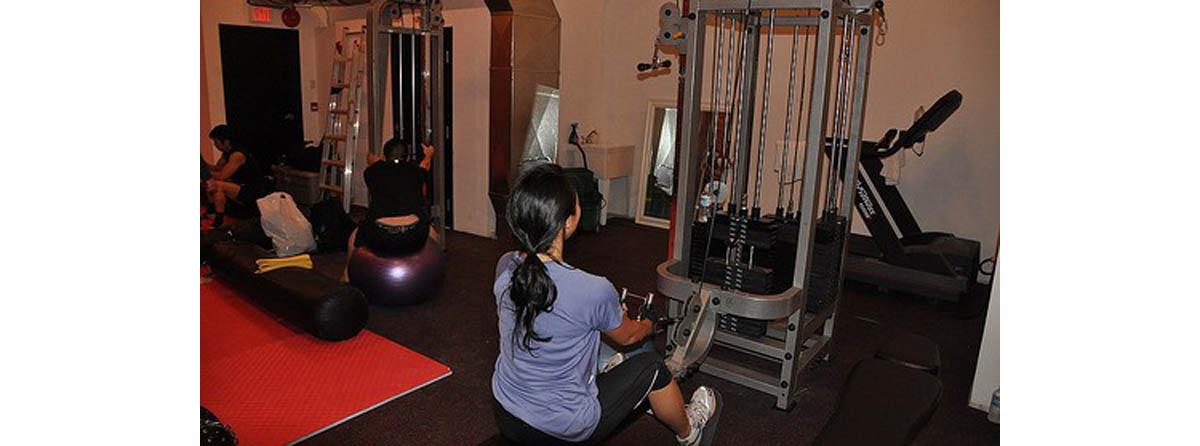Table of Contents
What it can mean is adapting a routine to the most effective it can be on that day.
Let’s say your gym routine looks something like this:

Power Clean – 5X3
Bench Press – 5X5
Squat – 5X5
Sprints – 4X50 meters
Bodyweight circuit – 15 minutes
Weighted carries – 400 meters
That’s a lot of intensity and a lot of volume. What if your instinct is to curl up on the couch and not even start? Well, you’re not alone, and instinctive training is probably best used a s a guide for what to do when you’re already at the gym. That’s to say, it’s better to incorporate the idea in order to improve what you already do than to throw everything out and start all over again.
Rather than setting out a routine and sticking to it word for word, why not try breaking it up into segments? For example, you could take the routine outlined above and break it like this:
Maximal benefit (power): Power Clean
Maximal Benefit (strength): Squat
Strength: Bench Press/Squat/Weighted Carries
Power: Power Clean/Sprints
Volume: Bodyweight Circuit/Weighted Carries
Maximal benefit just refers to the exercise that offers the most ‘bang for your buck.’
So if you hit the gym and you feel like you could do some work, but you can’t face psyching yourself up to do heavy power cleans, you could do the ‘Strength’ portion of your routine. If you feel like you can do some explosive stuff, but you can’t stand the idea of grinding through heavy squats, you can do the ‘Power’ section, or you could mix and match a couple of sections or even just a couple of exercises.
Could you design a better training session than power cleans and weighted carries? Yes, probably; but if you can’t face doing it, what difference does it make? Planning is essential but it’s training that gets results, and the best session is the one you actually do.
The next step is to apply these ideas to your own training. Go over your routine and decide what each exercise is there to give you. If you can’t figure out what it’s doing there, what’s it doing there? Maybe you just like it: fair enough, but put it in that category. Be honest.
You should end up with some exercises that are more strength oriented and some that are more power or athleticism oriented, maybe some dedicated cardio and some mobility training. Try to build four sessions out of your existing routine, one very small and the others focused on different elements. Looking at our example above, if you’re seriously crushed for time but feeling strong you might just do power cleans and leave. That’s not the best session in the world – but again, it’s better than not training at all.
You showed up, which is a large part of the battle, and you did the ‘bang for the buck’ movement, and still got to the Bar Mitzvah on time. Sometimes training has to take a backseat to life but if you program smartly you shouldn't have to leave it on the driveway.
- Photo courtesy of MartialArtsNomad.com by Flickr : www.flickr.com/photos/superwebdeveloper/5333763414/
- Photo courtesy of MartialArtsNomad.com by Flickr : www.flickr.com/photos/superwebdeveloper/4945274189/
- John, Dan, ‘9 Great Ideas to Improve Your Workouts,’ T-nation.com, September 17, 2013, stored at http://www.t-nation.com/free_online_article/most_recent/9_great_ideas_to_improve_your_workouts retrieved September 18, 2013-09-18
- Nosaka, K., Newton, M., Sacco, P., ‘Delayed Onset Muscle Soreness Does Not Reflect the Magnitude of Eccentric Exercise-Induced Muscle Damage,’ Scand J Med Sci Sports. 2002 Dec
- 12(6):337-46
- Haycock, Bryan, ‘The Risks of Instinctive Training,’ bodybuilding.com, December 22, 2004, stored at http://www.bodybuilding.com/fun/core8.htm, retrieved September 17, 2013
- Wendler, Jim, ‘Instinctive Training,’ jimwendler.com, October 5, 2012, stored at http://www.jimwendler.com/2012/10/instinctive-training/, retrieved September 18, 2013

